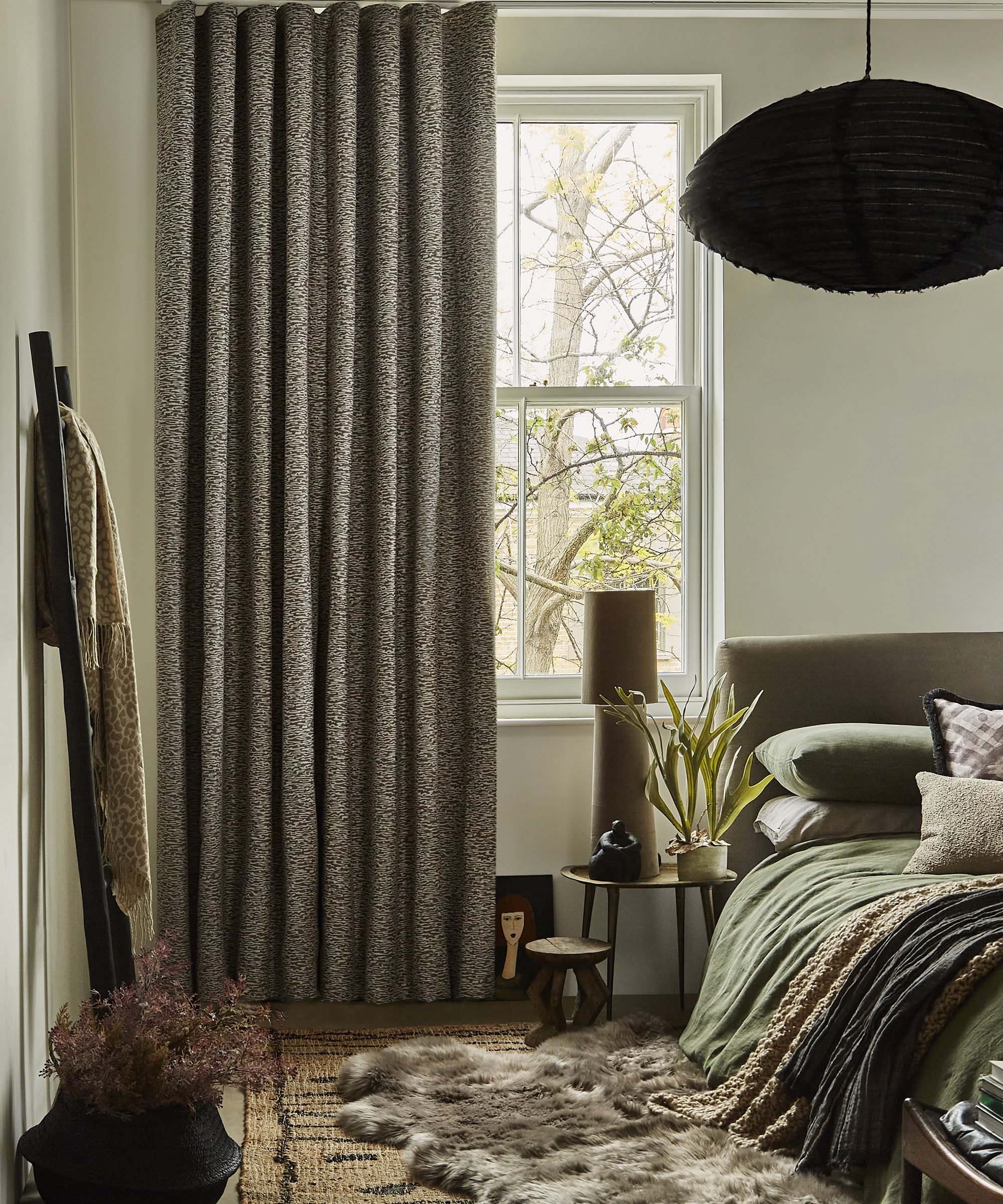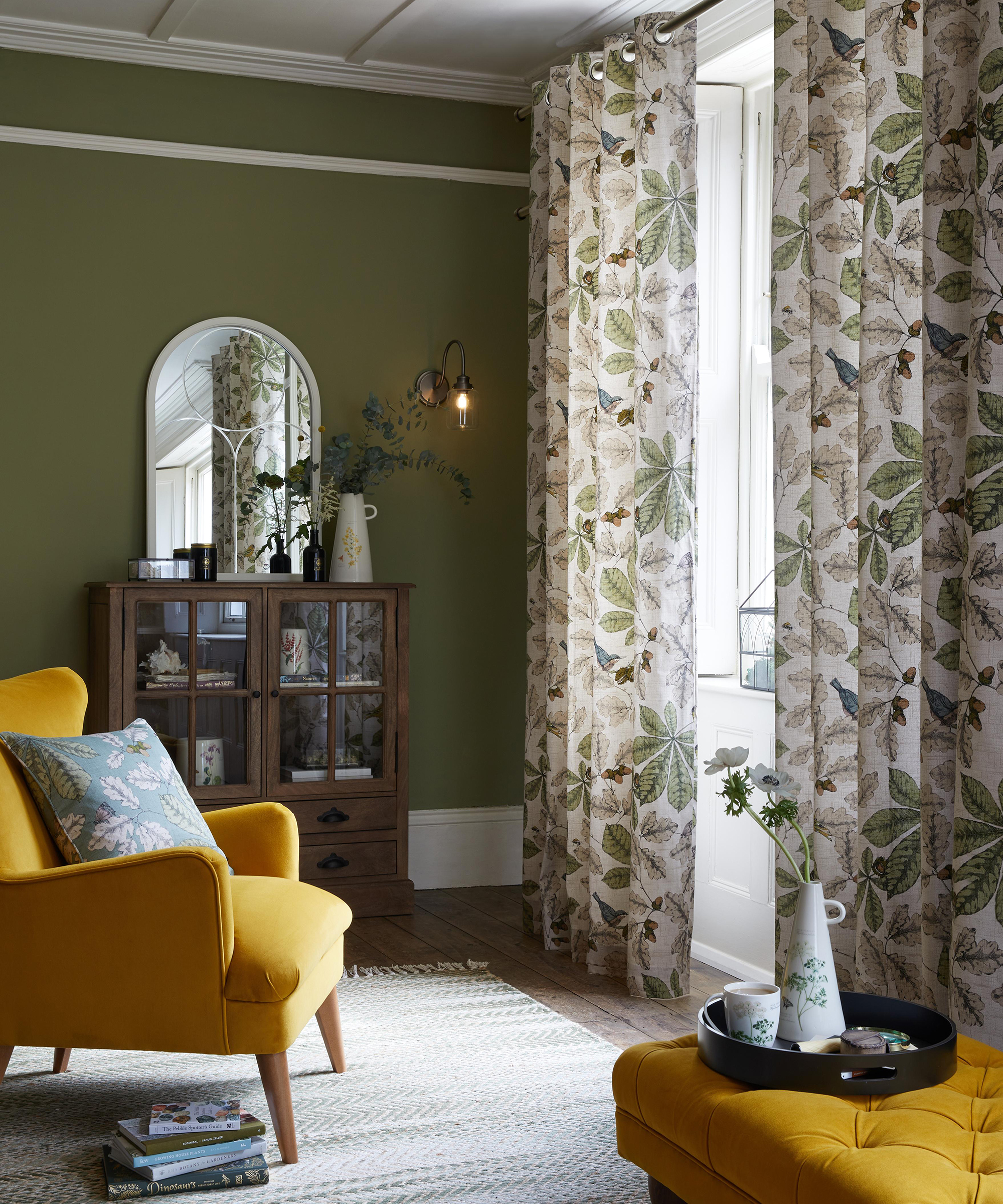How to measure for curtains: a DIY guide for beautifully-dressed windows
Learning how to measure curtains correctly involves working out the ideal dimensions. Here, we drop it like it's hot
Christina Chrysostomou

Knowing how to measure for curtains is a must for everyone's repertoire of DIY jobs. It's a straightforward job, that doesn't require a professional (just a tape measurer) plus, when you calculate the width and drop of your curtains yourself, you're guaranteed to create the look you want for your bedroom, living room, or another spot in the home.
You might have chosen the best curtain fabric, but if it's too short or too long, it can look messy or unrefined. So it's important to know how to work out how high or low they should go, if you're not opting for made-to-measure, professionally-fitted decorative hangings.
The right types of window treatments can make all the difference to the finish of an interior design scheme so it's worth investing a little time to get a gorgeous finish.

Measuring for curtains: how to determine width
Ahead of measuring for curtains, you need to be sure on the look you want. You may want to hang curtains from the ceiling, while most people choose to mount curtains either inside or outside of a window frame.
Curtains that sit inside the frame will show off decorative molding while if you're trying to turn attention away from an old and worn window frame or trim, it's a good idea to measure up for them to sit outside. The latter option is also best for insulation and if you want to make the best of blackout curtains.
Raymond Yang, home decor industry veteran and founder of Deconovo says: 'If you have decided to hang your curtains inside the window frame then the width of your windows will determine the curtain widths, but remember you need to calculate enough width to achieve the look you want.'
Measuring for curtains inside the frame
- Eyelet and tab-top curtains: Provide a nice, tailored look at 1.5x the window width.
- Pencil pleat and French pleat curtains: These give a fuller look and are usually calculated at 2x the window width.
- Rod pocket and cafe style curtains: These can offer an even fuller look with deep folds at 3x the window width.
'Adding an extra 2.5cm (1in) to the width will also provide a nice overlap in the middle when closed.' says Yang. Ideal to recreate the best living room curtain ideas.
Get small space home decor ideas, celeb inspiration, DIY tips and more, straight to your inbox!
Measuring for curtains outside the frame
A good curtain rod should extend about 6 inches out to each side of the window frame. This is not including the finials/any decorative end caps on the rod. For a curtain track, simply measure the full width.
'Depending on the size of the room you can extend the rods further for even better light and thermal protection. Curtain widths can then be calculated based on the total width of your rod (not including end caps) and using the same formulas above.' says Yang.
If you are working with curtain tracks that have an overlap, to find the right curtain width, measure the full width of both tracks separately and then add them together..
Calculating the curtain lengths
Your curtain rod should be installed about 12cm to 15cm above the top of the window, as this will help minimize light when the curtains are closed. Also allowing for the curtains to be gathered either side of the window when open. If you still need help with this bit, we've got a 7-step guide on how to install curtain rods.
Curtains can be hung either to the floor, to a sill, to below the sill or to below floor length so they puddle, so you'll want to think about your desired finish before measuring for curtains.
You'll need to measure from the rod to the exact point where you'll want your curtain to end. Always measure in at least three positions across the track or pole as floors and sills may not be level.
- Sill length drop: Measure to the sill and subtract 1.3cm/(0.5in).
- Below sill drop: 15cm/(6in) below the bottom of the frame.
- Floor length: About 1.3cm (0.5in) above the floor
- Formal length: For a more formal finish, add another 3cm (1.2in) to the drop of floor-length curtain so that the curtain rests on the floor.
- Puddle effect curtains: One of many good bedroom curtain ideas, to get a more luxurious puddling look you can add between 5-25cm (2-10in) to the length. Note however that drapes, that literally drape on the floor can collect dust, so make sure you know how to clean curtains properly. You can use your best steam cleaner to do this.
Should floor length curtains touch the floor?
'More puddling gives a richer, more elegant look but it is not very practical if you plan to actually open and close your curtains on a regular basis,' explains Yang.
'If you do want this look then you'll need to pick your fabric carefully too because stiff fabrics will not fall gracefully.'

What is the proper placement of curtain rods?
According to the experts, you can have outside or inside mount curtains. We spoke to Amber Dunford, style director at Overstock who explained the differences between the two.
She says: 'The outside mount is the most common mounting style for hanging curtains. When curtains are mounted outside, the rod is secured to the wall outside of the window frame. Outside-mount curtains can give the illusion of a larger window, provide full coverage to block out natural light, and create a more luxurious look,'
'While not as common, inside-mount curtains are another mounting option that will provide a specific look. Inside mount refers to a curtain rod that is secured inside the window frame, creating a more streamlined appearance. Inside-mount curtains don’t completely block out light, but they still provide plenty of privacy and offer a modern, minimalist look.'
Emily first (temporarily) joined the Real Homes team while interning on her summer break from university. After graduating, she worked on several publications before joining Real Homes as Staff Writer full time in mid-2018. She left the brand in 2020 to pursue another career, but still loves a second-hand bargain and sourcing unique finds to make her rented flat reflect her personality.
- Christina ChrysostomouFormer acting head ecommerce editor


